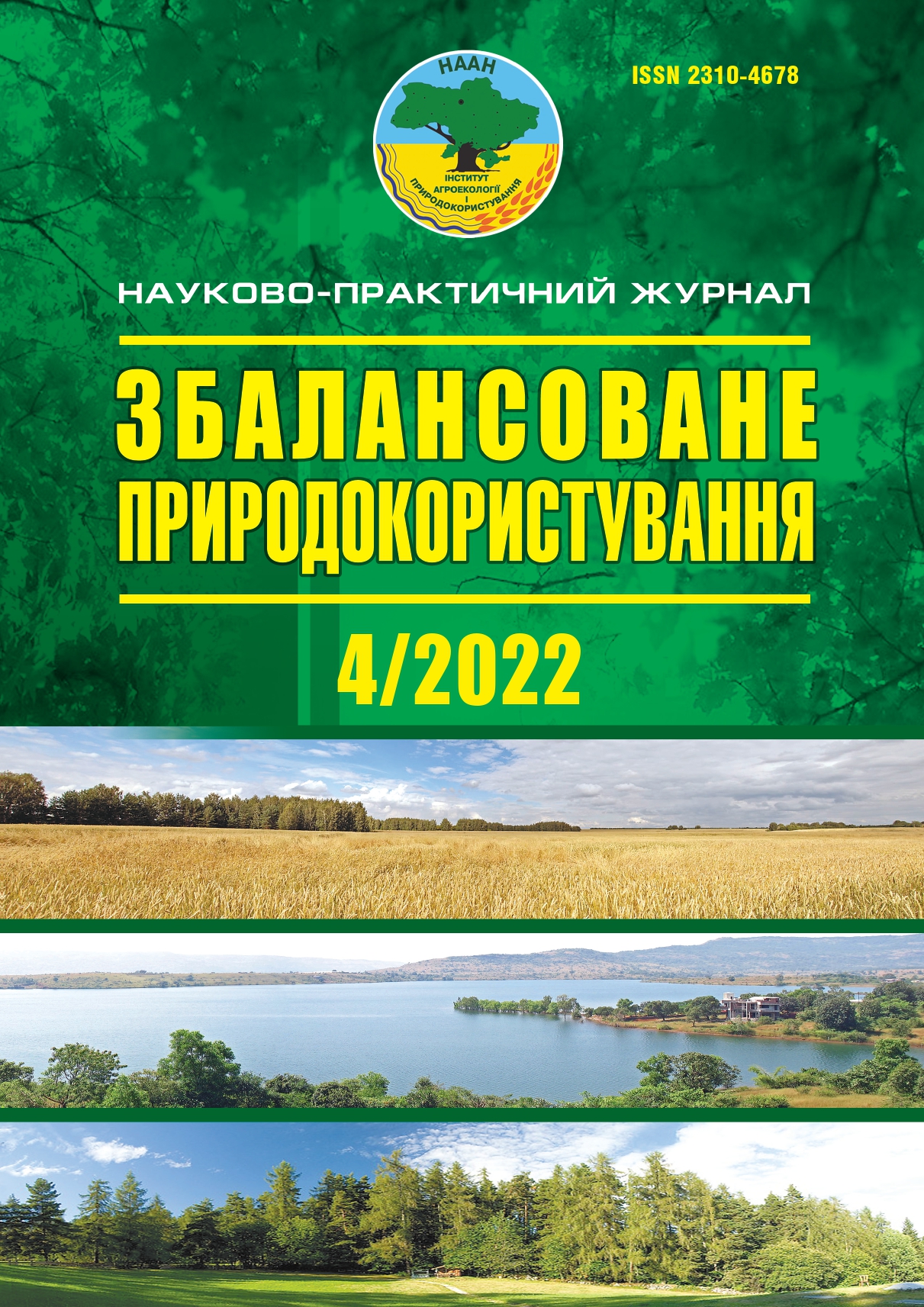Analytical assessment of self-sowed forests in Ukraine
DOI:
https://doi.org/10.33730/2310-4678.4.2022.275035Keywords:
forestry, forested agricultural lands, self-forested territories, forest monitoring, statistical data on forests in UkraineAbstract
It was determined that the need to increase the forest resource potential and increase the efficiency of forestry production forces us to look for more rational scientific and methodological approaches to the use of forests. Of course, for this it is necessary to have reliable information about the existing state of the forest cover of the territory. It is known that statistical data on the area of the country’s forest fund take into account only the area of forests located on the lands of forestry purpose and do not contain information on unaccounted for forests on the lands of agricultural purpose. Self-seeded forests in Ukraine are a fairly common phenomenon that can significantly influence the increase in the country’s forest cover. Currently, the very concept of “self-seeding forest” is not legally defined, and it is not clear how to most effectively use this phenomenon for the good of society from an economic and ecological perspective. That is why it is necessary to determine how widespread self-seeded forests are on the territory of the country and which areas are in question. Taking into account the current trends in the development of technologies for remote sensing of the Earth, an analytical assessment of self-seeded forests in Ukraine was carried out. Analytical assessment consists in the comparison of space images from the Public Cadastral Map of Ukraine and space observation data (RSE — remote sensing of the earth). The photos revealed that large areas of agricultural land are covered with forests and have not been used for their intended purpose for several decades. As a result of the research, a graphic method of determining the area of self-seeded forests was developed and a regularity was established in the change in the coefficients of forest cover and agricultural development of the territory, taking into account the area of self-seeded forests. To visually present the results of the graphic method of determining the area of self-seeded forests, the 2007 cadastral plan of land accounting of CAE (collective agricultural enterprise) “Sosnivske” was used. According to the data of the remote sensing of the land and the data of the Public Cadastral Map, significant areas of self-seeded forests were found on the territory of CAE “Sosnivske”, which were formed during the period 2007–2021.
References
Shvydenko, A. Z. (2018). Lis, nauky pro zhyttia, systemnyi analiz: hlobalni vyklyky [Forest, life sciences, system analysis: global challenges]. The Third Millennium Sustainable Development Goals: Challenges for Life Sciences: International Conference (Kyiv, Ukraine, May 23–23, 2018). Kyiv, 2018. URL: https://tlu.kiev.ua/uploads/media/Kiev_Shvidenko_Anniverssary_Conf_23-35_May_2018_F.ppt [in Ukrainian].
Myroniuk, V.Ya. (2022). Rozroblennia metodyky poiednannia nazemnykh vybirkovykh danykh i materialiv dystantsiinoho zonduvannia Zemli dlia inventaryzatsii lisiv Ukrainy. Ahropolitychnyi zvit. [Development of a method of combining ground sample data and materials of remote sensing of the Earth for the inventory of forests of Ukraine. Agricultural policy report]. Kyiv. URL: https://www.google.com/url?sa=t&rct=j&q=&esrc=s&source=web&cd=&ved=2ahUKEwjswfDb7On5AhVvkosKHV6qDtIQFnoECAcQAQ&url=https%3A%2F%2Fnfi.org.ua%2Fdocuments%2F5%2FAPD_Bericht_Beratungsdienstleistungen_Myroniuk.pdf&usg= AOvVaw0Yq18UR_fzYyf2LVJBgsm7 [in Ukrainian].
Myroniuk, V. V. (2020). Inventaryzatsiia rivnynnykh lisiv Ukrainy za danymy suputnykovoi ziomky. Monohrafiia [Inventory of lowland forests of Ukraine based on satellite survey data. Monograph]. Kharkiv: JSC Kharkiv Book Factory “GLOBUS” [in Ukrainian].
Downloads
Published
Issue
Section
License
- The authors reserve the right to authorship their work and pass the journal the right to publish this work under a Creative Commons Attribution License license, which allows other persons to freely distribute the published work with the obligatory The authors of the original work and the first publication of this magazine.
- The authors have the right to make independent additional agreements on the nonexclusive dissemination of the work in the form in which it was published by this magazine (for example, to post work in the company's electronic storage or to publish as a monograph) , subject to the first publication of the link to this journal.
- Journal policy allows and encourages the placement of authors on the Internet (for example, in the repositories of institutions or on personal websites) manuscript work as to the presentation of this manuscript to the editorial board and during its editorial processing, as it contributes to The productive scientific discussion and positively affects the efficiency and dynamics of citation published work (see The Effect of Open Access).


